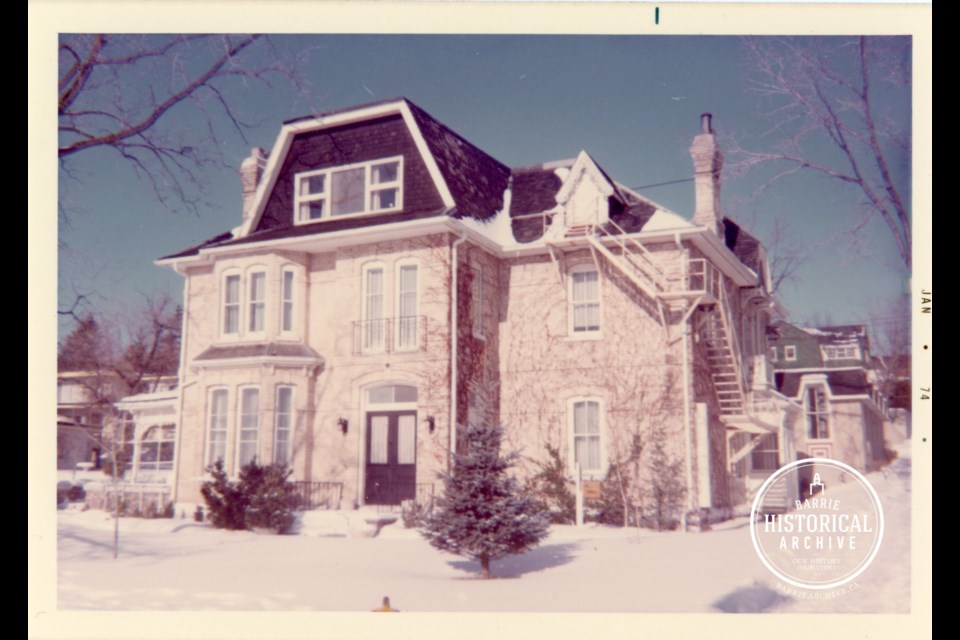Editor's note: To read part one from last week, click here.
Frank Livingston never ceased to amaze the locals with his new ideas.
After opening his new garage and auto showroom on Maple Avenue in 1924, he bought a second-hand bus and began running his own Barrie-Allandale transit route.
Next, he bought a motor sleigh, which was essentially a truck with double wheels at the rear and snow runners on the front, something never before seen in Barrie.
Did Frank Livingston coin the term “go big or go home”? It wouldn’t surprise me if he did. In 1915, a catastrophic fire left a large gap in one business block when the original Queen’s Hotel burned to the ground. It had occupied the block that today spans from 110 Dunlop St. E. over to the west wall of 118 Dunlop St. E.
A distinct absence of Victorian architecture can be observed in that section today.
For more than a decade, the lots stood empty, ugly and filled with rubble, while the town, lawyers and insurance companies bickered amongst themselves. The hotel owners turned down an early offer of $10,000, as they believed it was worth much more.
In 1926, Frank Livingston got it for $1,600.
Livingston had a state-of-the-art auto dealership built for himself at 110 Dunlop St. E. and the rest became filled in by a bowling alley and an Eaton’s store.
That steal of a deal fell into Livingston’s lap courtesy of town council’s willingness to get rid of a long-standing tax burden and unsightly abandoned lot.
He soon began eyeing up a similar property – the vacant foundry building on Bayfield and Ross streets.
For those who thought Livingston was crazy, and there were many, for buying the Queen’s Hotel property, they were proven wrong when his business exploded and he took on his two brothers, Morley and William, just to keep up.
In two years time, he bought the foundry and opened a vastly expanded dealership and garage. He then had room to sell and service large trucks.
Frank Livingston never stopped looking for deals and opportunities and, in 1935, he found the one that is the centre of this story.
To step away from Mr. Livingston’s adventures for a moment, there was a parallel story unfolding a few short blocks away from the old foundry building. It began sometime in the 1890s when the deputy postmaster, John Robert Todd, built a house for his new bride, Lee Wright.
Lee was the daughter of lumber baron, Orson Fayette Wright, who had come from the United States as a land speculator. Lee’s brother, Charles Orson Fayette Wright, had gone west to Alberta, where he later became a Member of the Legislative Assembly (MLA) for Hughenden, southeast of Edmonton, so the Todds followed in 1909.
Dr. Robert Sturgeon Broad, had been living and practising his profession on an upper floor of the McCarthy Block, east of Five Points, until relocating to the former Todd house, which was described as being at Dyment Gore on the corner of Bradford and Elizabeth streets. In 1912, he also packed up and left for Alberta.
The next occupant was another physician. Dr. Ernest Gordon Turnbull graduated from McGill University in 1906 and began what he called “a horse and buggy” medical practice in the rural areas around Elmvale. In 1912, he succeeded Dr. Broad and took up living and seeing patients in the former’s house.
The newspaper ads that followed provided an address at 101 Elizabeth St.
In March 1935, Dr. Turnbull had outgrown the small space and purchased the beautiful — and much larger — home and office that had belonged to Dr. E.D. Morton. This house is located at 158 Dunlop St. E., at the corner of Poyntz Street.
The 101 Elizabeth St. property was sold to Shell Oil, which planned to build an ultra-modern service station on the site.
This is when Frank Livingston saw his chance. He purchased the house separately from the land and made plans to take the structure away.
By the mid-1930s, Livingston had mostly stepped away from his automotive work and moved into the construction business, which is probably why he thought he might attempt the house moving project on his own accord.
House-moving is no easy task, but it appears that things went well enough during the first phase of the venture. Whether Maple Avenue, or other residential streets leading to Ross Street, were deemed too narrow we do not know, but the settled upon route included an easterly move along Elizabeth Street followed by a north turn at Five Points.
With the first floor safely placed on the corner of Maple Avenue and Ross Street, Livingston and his trailers headed back to the former Turnbull property for the upper storey. While making the turn at Five Points, the trailers broke down and blocked the intersection with their massive cargo.
Four days later, on May 2, 1935, wooden skids were brought to the site and the whole thing got going again, allowing traffic to finally flow through once more.
Frank Livingston moved more structures after that. Perhaps he learned a few things during that 1935 fiasco. For a few years, Livingston and his family resided at 81 Maple Ave., a house that seems rather content to remain on its current lot.
Each week, the Barrie Historical Archive provides BarrieToday readers with a glimpse of the city’s past. This unique column features photos and stories from years gone by and is sure to appeal to the historian in each of us.



